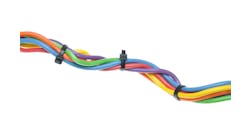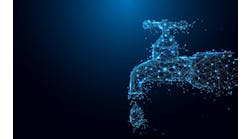How can we provide Mechanical and Process Engineering Regulatory Control Guidance Tips (Part 1)?
This is the 5th in a continuing series of practical and useful questions on PID tuning raised by Brian Hrankowsky a knowledgeable process control specialist in the pharmaceutical industry after having been present at a panel session on controller tuning at ISA Automation Week 2010 developed by Michel Ruel. Brian is not representing his company in these posts. The questions and answers in all of these blogs will be addressed in much greater detail in the long overdue 4th edition of my book Tuning and Control Loop Performance being published by Momentum Press.
The university courses on process control for biochemical, chemical, mechanical, and petroleum engineers tend to emphasize frequency response, Laplace transforms, Z-transforms, and State Space. Performance is often judged on set point response with disturbances entering downstream of the process. The focus is on continuous rather than batch processes and simulations tend to be steady state rather than dynamic. Process magazines particularly those serving the refining and petrochemical industry may have good articles on Model Predictive Control (MPC) but generally lack practical articles from industry experts on PID control.
For successful MPC implementation, knowledge of the steady state gains is most important. These gains determine the matrix condition and the objectives and operation of the optimizer, typically a Linear Program (LP). In contrast, a PID tuned for good disturbance rejection reacts to the dynamics in the first few deadtimes. For the more important loops, the deadtime and the initial ramp rate is what is important. For many slow continuous processes and batch processes the response is best treated as integrating. Also, whereas setpoint response is important for an MPC being driven for optimization by a LP, the ability to compensate for relatively fast disturbances as process inputs is of paramount importance for a PID with a notable exception being some bioreactor loops. The ball game is significantly different for MPC and PID.
Some consultants have stepped in to fill the gap. Unfortunately, without much participation from industry experts, the articles can be misleading.
In the Hydrocarbon Processing Oct 2012 article titled "Why don't we properly train control engineers" the author mentions in his Figure 2 that even a slight overshoot of the manipulated variable (MV) (e.g. PID output) is undesirable. I seem to remember in another article an unequivocal goal of eliminating MV overshoot. I think this leads to the unusual statement that the use of a PID structure with proportional on PV (P on PV) instead of proportional on error (P on E) reduces the Integrated Absolute Error (IAE) by a factor of 3 as shown in his Figure 1. For a non-oscillatory response this translates to a ratio of integral time to controller gain that is 3 times larger. I suspect the gain is drastically reduced because the peak error in Figure 1 is over twice as large for the P on PV structure). I think to avoid MV overshoot with P on E as shown in Figure 2, The author was reducing the gain drastically leading to the scenarios depicted in Figure 1. I think model predictive control (MPC) tends to not have overshoot in its response and since many refineries and petrochemical plants have MPC, maybe MV overshoot is perceived as bad. For most of loops I worked on, MV overshoot enabled a faster setpoint response and a smaller peak error. In fact, for integrating and positive feedback processes, MV overshoot is essential. Large lag processes are best treated as integrating processes and benefit form MV overshoot.
Since figure 1 has no declaration of the deadtime to time constant ratio, it is difficult to assess tuning and MV overshoot. For a deadtime dominant system, the peak error does not change much with tuning assuming a step load disturbance. Since the peak error is drastically changing in Figure 1, one is lead to believe the process is dominated by a large lag.
I don't remember MV overshoot being anywhere near as big a concern as better PV control. I realize there are some cases where it is undesirable for the MV to hit an output limit. I am wondering if there is something about hydrocarbon plants where MV overshoot is normally more important or is it simply symptomatic of steady state thinking. I realize there may be many gas volume based reactions that have less residence time and back mixing. Also these plants have more interactions due to heat integration and product mix. The closest thing to this in my experience was the temperature controllers on trains of continuous fluidized bed reactors manipulating reactant feeds. The loops were tuned to prevent a temporary unbalance in the reactant feeds since the plug flow fluidized bed did not smooth out the MV oscillations. There are cases to reduce MV overshoot but unequivocal statements can result in poor performance and even safety issues (e.g., runaway reactions). A deeper understanding of dynamics and process objectives from people with extensive industry experience can provide better guidance.
I have asked 3 industry experts Greg Shinskey, Michel Ruel, and Jacques Smuts what they thought about the article and MV overshoot.
Greg Shinskey's reply:
"I remember the October article, but found so many inconsistencies in it that it wasn't worth saving. The avoidance of MV overshoot is applicable only to deadtime-dominant processes. If you avoid MV overshoot on an integrating process, you will not return to setpoint (SP), for either a SP or load change. Most petro-chemical processes are lag dominant, where MV overshoot is necessary for minimum peak deviation and fast return to SP."
"There is a theoretical basis for MV overshoot, expressed in my development of best-possible control, derived in Process Control Systems 4th ed., p. 35, and in Feedback Controllers ..., p. 30. Furthermore, you cannot control an unstable reactor without MV overshoot--it will run away. An analog for an unstable reactor is the inverted pendulum. Try to balance one in your hand and see the very large MV overshoot required."
"Tune the PID for optimum load response--minimum IAE in my view--and accept the MV overshoot, (unless you have a good economic reason to minimize it). Then apply a lead-lag SP filter to get whatever SP response you want."
Michel Ruel's reply:
"I read the article in Hydrocarbon Processing."
"I agree that overshoot on MV is rarely a concern and removing MV overshoot costs a lot on the settling time. A good analogy is driving a car and using the accelerator without overshoot... the settling time to reach a new speed will be quite long; if properly used, one can push on the pedal a lot until the car accelerates closely to the desired speed, then reduces gas flow... if well tuned, you will observe MV overshoot but no PV overshoot."
"If one needs to reduce overshoot on a SP change (usually on PV but it could also be on MV), we suggest:
•· SP filter (time constant = Integral time); using SP Lead/Lag is more flexible since Lead can be adjusted to improve SP response
•· P on PV"
"Using SP filter (or P on PV also named I-PD), performance on load change and SP change will be similar; indeed, if regular PID is used, SP response will be more aggressive than load change."
Jacques Smuts reply:
"MV overshoot is not prevalent in properly-tuned flow and liquid pressure loops (deadtime almost equal to lag). It becomes a factor in loops with long lags relative to their dead times (lag >> deadtime), such as reactor temperature and furnace pressure loops. These loops typically require the use of high controller gains to "overcome" the relatively long process lags, and therefore we get the MV overshoot on setpoint changes."
"In my opinion, it is a poor strategy to reduce the controller gain so that one can use more integral so that the loop performs reasonably well with a P-on-PV controller, which was selected to address MV overshoot.
•· First, MV overshoot is not always a bad thing - tuning should always be considered in relation to the process. There is no one-size-fits-all solution when it comes to optimizing control loops.
•· Second, integral control mode reacts slower than proportional. If a tuning rule reduces proportional action and increases integral action with the purpose of improving setpoint-change response of a P-on-PV controller, it will negatively impact the loop's disturbance response (peak error) compared to a properly tuned controller."
"In my experience, the loops that do exhibit MV overshoot rarely had their setpoints changed, and when they did, a fast speed of response was not important. So, using P on PV did not require any special tuning method. Alternatively, a regular P on Error controller can be used if the setpoint is filtered. In both cases, the controller can be tuned for an appropriate disturbance-rejection response."




